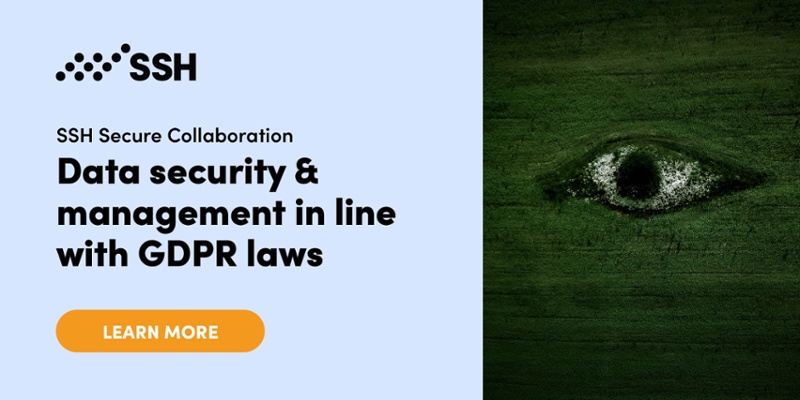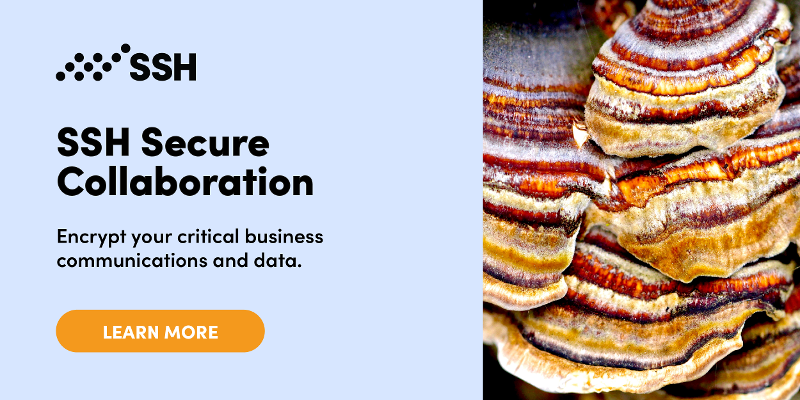Secure Data Sharing
In the era of modern IT environments, organizations have many reasons and needs to share data – enabling remote work for employees, improving operational efficiency, or collaborating with third-party vendors being only a few of them. Data sharing is simply a must. However, without proper data sharing security measures, organizations put themselves at risk of breaking data privacy laws and expose themselves to an increased risk of cyberattacks and data breaches.
In this article, we explain what secure data sharing is, why businesses need secure data sharing, and how to share data securely with compliance in mind.
Contents
What is Secure Data Sharing?
Why Do Businesses Need Secure Data Sharing?
How to Share Data Securely?
Secure Data Sharing with Guaranteed Compliance
What is Secure Data Sharing?
Businesses frequently collect, share, and store a vast variety of sensitive data, ranging from employee personal information or customer financial data to business trade secrets. Regularly, this valuable data needs to be shared with others within and outside the organization. Secure data sharing ensures that any data resources can be shared with others without compromising the organization’s security or data security.
Secure data sharing means sharing of sensitive, confidential, restricted, or even secret information in a way that ensures that the data is protected from unauthorized access or misuse. It also includes sharing of data in line with data sharing and privacy security laws, like GDPR.
Why Do Businesses Need Secure Data Sharing?
Four key needs and benefits of implementing secure data sharing are:
Compliance with data security and privacy laws
Especially in European Union countries, strict data security laws and regulations mandate organizations to treat data with the utmost caution. By implementing secure data sharing in line with laws, businesses ensure their compliance and do not have to worry about passing data security-related audits.
A key element in GDPR compliance is restricting access to sensitive data only to the bare minimum needed for the job and limiting the number of people with such access. Another is the ability to demonstrate compliance during an audit.
Protecting business as well as customer reputation
Without secure data sharing, organizations are at increased risk of data breaches. A potential data leak puts not only the business’s reputation but also the customers’ reputation on the line as their data might get exposed or misused during the breach.
Additionally, the financial repercussions of a breach could lead to bankruptcy, in the worst-case scenario. For example, in 2022, the global average cost of a data breach was daunting $4.35 million.
Secure business collaboration across borders
Secure data sharing allows businesses to share their sensitive data with employees as well as third-party organizations and collaborate on joint projects securely. With the right data sharing security measures in place, business collaboration is possible not only across organizational borders but also across physical borders. Secure data sharing enables smoother operations for employees and vendors who work remotely or in different countries.
Enhanced productivity and operational efficiency
The right set of data sharing security tools allows organizations to easily protect as well as govern their data. A comprehensive secure data sharing toolset should offer features that can be used to enforce data policies and controls. Like that, organizations can improve their operations and grow their business without the need for cumbersome software and complicated processes.
Many tools also offer additional security features and applications that help businesses protect not just their data in transit, but also their data at rest. A comprehensive secure business communications toolset can take an organization’s secure data sharing to the next level.
How to Share Data Securely?
There are numerous ways for organizations to approach secure data sharing depending on the company size, type, and industry. Here are six steps every organization should take to ensure data sharing security without risking compliance:
1. Create data classification and data management policies
For every organization, it is important to understand what information they process and manage. Not all data is equal, thus creating clear data classification is the first step toward secure data sharing. It is crucial to start by identifying which data is sensitive, highly confidential, restricted, or secret and assigning appropriate levels of restrictions and four-eye mechanisms to each data group. Based on this data classification, an organization can then create appropriate policies which determine the protection needed, who can access the data, and what they can do with it.
2. Implement appropriate data sharing security controls
The next step is to implement suitable security measures – depending on the level of sensitivity, each data group might require different security controls. The right tool or a set of tools should offer a variety of technical controls, including:
- Robust end-to-end encryption
- Access controls
- Various authentication methods (e. g. MFA, SSO, passwords)
- Monitoring and reporting, including audit trails
3. Control where your sensitive data is and who has access to it
Based on the business type and industry, organizations need to adhere to various regulations determining where data is stored and how it can be shared. An organization should always make a cautious decision when it comes to storing their sensitive data, whether they decide to use a private cloud, managed services, or on-premises storage. The solution, which organizations use for secure data sharing, should give them the flexibility to choose between various deployment models.
4. Use secure business communication channels
When sharing sensitive data, it is crucial to use secure communication channels to ensure that the communication cannot be intercepted by unauthorized, potentially malicious actors. These secure channels include, for example, encrypted email communications, secure file sharing, or secure data sharing via encrypted network connections.
Additionally, with quantum computers on the horizon, it is important to also consider their impact on secure data sharing, especially when sensitive data with long-term value is being shared.
Learn how to prepare your organization for the quantum-safe future >>>
5. Educate your employees about secure data sharing
By educating employees on how to share data securely, organizations can significantly improve their security posture. Employee training should include information about security and data-related policies as well as practical information on how to use the implemented tools.
6. Review your policies, processes, and tools regularly
Lastly, it is important to regularly review and assess all data-sharing-related policies, procedures, and technologies. The cybersecurity landscape, laws, and regulations change, and so do cyberthreats. Thus, assessing the effectiveness of implemented security controls should be a regular practice.
Secure Data Sharing with Guaranteed Compliance
SalaX Secure Collaboration is a comprehensive toolset that helps businesses collect, store, share, sign, and access their sensitive data securely with compliance in mind.
SalaX Secure Collaboration offers all you need to share data securely within and outside your organizational borders. With robust security features and end-to-end encryption, your data is fully protected while in transit. Flexible deployment options put you in control of where your data is stored, whether in the cloud or on-premises.
An easy-to-use interface for users and admins ensures no need for heavy-handed onboarding or training. You can classify information, adjust security levels according to your policies, and assign read, write, and share rights per role. You can apply extra security layers (like MFA) when needed and always audit activity.
Learn more about SalaX Secure Collaboration >>>
Start your journey towards secure data sharing and contact us to see our SalaX Secure Collaboration in action >>>


